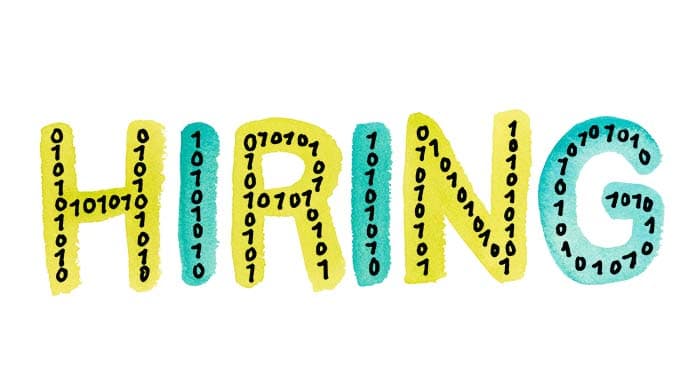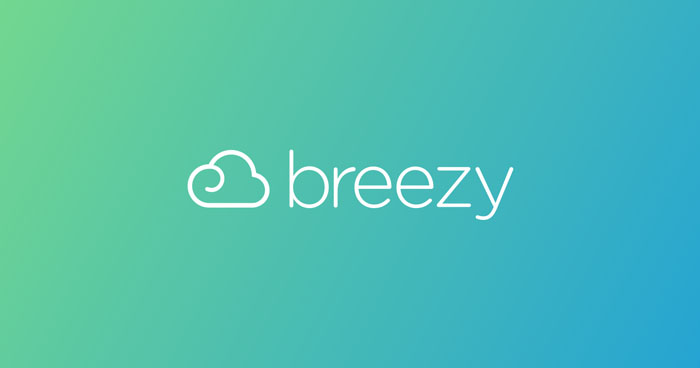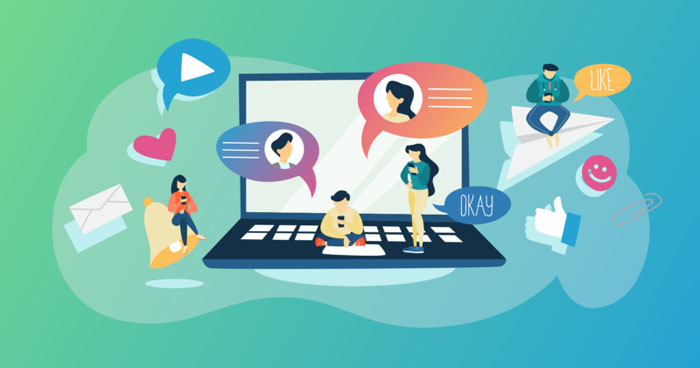
AI is nothing new, but it is more popular than ever. Since 2018, the use of AI has more than doubled across industries and today, 80% of HR professionals report that they have used or are considering using generative AI in the hiring process.
But like any new technology, your success with AI is all in how you use it. While much of the public remains wary of AI playing a key role in important workplace decisions like promoting or firing, 47% of Americans believe it would actually do a better job than humans when it comes to evaluating applicants without bias.
But is it really ok to use AI in your recruitment process? And how can you fit AI into your hiring process without sacrificing the human touch?
Let's take a closer look at some of the latest tips and best practices for using AI in recruitment and hiring.
7 rules for AI in hiring
- Just say “no” to AI for AI's sake
- Garbage in, garbage out
- Use AI to build (not break) connections
- Always use your own judgment
- Audit your algorithms
- Choose your screening data wisely
- Don’t ignore the legal ramifications
1. Just say “no” to AI for AI's sake
“I think the biggest risk that employers face is falling prey to the hype — not realizing what they're actually looking for and instead just trying to achieve some sort of ‘AI-ness’ without really understanding what they need or why they need it,” explains Gauri Manglik.
As the CEO and co-founder of non-profit fundraising platform Instrumentl, Gauri has dedicated her career to building intuitive user experiences — a remit that's all about making the right decisions, not just the easiest ones.
By taking a long hard look at where AI can actually benefit your company, she believes you can avoid the kind of hype that leads to clunky processes and use technology to streamline your recruitment for the benefit of both your candidates and your hiring team.
“The biggest opportunity is understanding what your company needs and being able to get clear on who you're hiring before you even start looking at candidates' resumes or doing interviews.”
Before you go all in on AI, take time to develop your candidate persona and pinpoint the AI use cases that will make the biggest difference for your business.
2. Garbage in, garbage out
While recruiting automation software certainly has the potential to increase efficiency, training your hiring teams to use AI correctly is key to getting what you need out of it.
According to Young Pham, co-founder and HR manager of internet marketing and e-commerce news site BizReport, companies need to think critically about the data they use to train AI.
“While AI can add a certain level of efficiency in hiring, its ability to identify and screen candidates is solely determined by its training.”
“This training is done by humans using historical hiring data, and as such, it is possible that the biases often associated with the traditional hiring process will just as easily manifest in an AI-based hiring system,” Young explains.
Training your AI to assist on manual tasks in the hiring process without falling back on biased data isn't a one-time fix. It's an ongoing process.
“There needs to be a constant process of validation and improvement to ensure that the tool is fully aligned with the hiring standards of the organization.”
3. Use AI to build (not break) connections
Skeptics worry that AI will take the ”human” out of human resources. But according to Lauren Elliot, Global Operations Director for the specialist SaaS headhunters at Teem, artificial intelligence can actually maximize connection by helping human recruiters use their time more strategically.
“Saving time is the backbone of AI and automation,” Lauren explains.
“It's about reducing the workload and freeing up people to BE PEOPLE — relationships, empathy, negotiations, these things that AI can never replace.”
By automating tasks like writing job postings for job boards, formulating interview questions and more chatgpt prompts for recruiters, in-house teams can be more proactive on the candidate-facing side.
“The benefits will be in making each employee more effective, as they can focus on creating the best candidate experience whilst also getting the best hires for their companies,” says Lauren.
Leaning on AI as your HR sidekick is one of the benefits of recruiting automation, but be prepared to keep personalized contact at the forefront.
4. Always use your own judgment
Experts like Sarah Roberts, founder of A Beauty Edit, agree strongly with the human-first approach to AI.
"Human interaction and connection are critical to great candidate experiences,” Sarah explains. “When using AI for recruitment, there's a high risk of the hiring process becoming impersonal, which can alienate the candidates and ruin their experience.”
A poor candidate experience makes it harder for businesses to attract qualified candidates in the future, leading to a vicious cycle of bad experiences and worse employer branding.
But don’t worry. Sarah has some tips to help you keep it real when using AI in your hiring process.
“To overcome this risk, I ensure that I’m interacting with the candidates directly throughout the process, and that I’m using my own judgment alongside the AI recruitment tool when making hiring decisions.”
It’s all about using AI as an assistant — not an expert you can fully outsource all of your recruiting tasks to.
“This way, the process isn't as cold, and I'm able to provide the necessary oversight to ensure that the automated tool is helping me bring in the right people.”
5. Audit your algorithms
While AI makes it possible to automate time-consuming tasks and enhance data-driven decisions, it also presents its share of risks — especially when employers fail to audit their algorithms.
According to Ryan Mckenzie, co-founder and CMO of DTC brand Tru Earth, strategic and conscientious utilization of AI in the hiring process is key. Employers should resist falling prey to its efficiency.
“Any bias in the data used to train AI models could lead to discriminatory hiring practices. An AI tool might unintentionally ignore specific demographics based on false correlation driven by the training data.”
AI tools are great at handling structured data such as names, dates, and years of work experience, but they often struggle with the unstructured data found in cover letters or interview responses — meaning hiring managers could miss out on top talent from diverse backgrounds.
“Regular auditing and fine-tuning of the algorithms should be adopted as best practice to ensure fairness,” Ryan explains. “Interweaving the capacity of AI with authentic human intuition paves the way for a fruitful and unbiased recruiting process where the true potential of every candidate is acknowledged and considered.”
6. Choose your screening data wisely
Alister Wood, owner and Director of visitor management platform VisitUs, takes a hands-on approach to recruiting automation tools. Over the years, he’s learned a thing or two about AI, including when to use it to replace human effort, and how to get the most out of it.
“It is best to keep AI tools away from processes that need human judgment [and instead] use AI tools for automation.”
Of course, that doesn’t mean you have to swear off AI altogether. “When it comes to reviewing and sorting candidates based on objective criteria…there are plenty of AI HR tools on the market that can provide such services with minimal risks involved,” he explains.
The key is to use tools that focus on the right data.
“There is a greater risk involved with using AI to screen candidates based on more subjective data like their skills or their motivation letters,” Alister cautions. “These can be interpreted in many ways and it is best left to a human.”
While it can be a safe bet to use AI to screen for more objective data like years of experience, you may want a real pair of eyes on those personalized cover letters and skills sections.
7. Don’t ignore the legal ramifications
According to Riva Jeane May Caburog, the PR/media coordinator for law firm Nadrich & Cohen, AI is not just a hiring hot topic — it’s also a legal one.
“When employers use AI in hiring, they need to be mindful of legal and regulatory compliance regarding candidate data,” Riva cautions. “Laws like GDPR and CCPA require employers to protect candidate privacy and handle data responsibly. Failing to do so leads to legal trouble and harms their reputation.”
The goal is to take advantage of the benefits AI has to offer, while always staying on the right side of the law.
“To stay compliant, employers should implement strong security measures like encryption and access controls to safeguard candidate information.”
Here are some of the latest best practices to keep in mind:
- Be transparent about your data practices
- Always obtain consent
- Respect candidate privacy
- Communicate your privacy policies
By prioritizing compliance, you can create an opportunity to build trust with candidates and elevate your employer brand in full accordance with the law. Above all, be sure to always check with a legal professional to ensure your process is compliant.
Breezy brings your hiring process into the digital age
AI shouldn’t steer your recruitment strategy completely, but it can help you free up more time to connect with your top candidates.
By removing identifying data like gender, age, and ethnicity from applicant profiles, Incognito Apply helps you identify your best-fit candidates based on the qualifications that matter.
When combined with Candidate Match Score, user-controlled AI weightings keep you in control of the screening process, while making it easier to identify your best candidates in a sea of incoming applications.
Try it for yourself. Get ahead of the AI curve with a free 14-day trial of Breezy!





